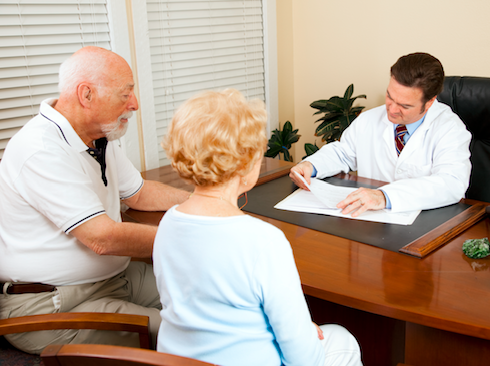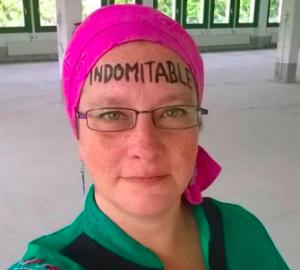Shared Decision Making: Putting the Patient At The Center of Medical Care
“Tell me and I forget. Teach me and I remember. Involve me and I learn” – Benjamin Franklin
As gravity shifts away from health care providers as the sole keeper of medical information, the importance of sharing decisions, as opposed to clinicians making decisions on behalf of patients, has been increasingly recognized. Shared decision- making (SDM) is the conversation that happens between a patient and clinician to reach a healthcare choice together. Examples include decisions about surgery, medications, self-management, and screening and diagnostic tests. While the process commonly involves a clinician and patient, other members of the health care team or friends and family members may also be invited to participate. The clinician provides current, evidence-based information about treatment options, describing their risks and benefits; and the patient expresses his or her preferences and values. It is thus a communication approach that seeks to balance clinician expertise with patient preference.
Dr Mohsin Choudry describes shared decision-making as “a way of transforming the conversation between doctors and their patients so that the thoughts, concerns and especially the preferences of individuals are placed more equally alongside the clinician’s expertise, experience and skills.” Before physicians can really know what the proper treatment is for a patient, they must understand the particular needs of their patients. This approach recognizes that clinicians and patients bring different but equally important forms of expertise to the decision-making process. The clinician’s expertise is based on knowledge of the disease, likely prognosis, tests and treatment; patients are experts on how a disease impacts their daily life, and their values and preferences. For some medical decisions, there is one clearly superior treatment path (for example, acute appendicitis necessitates surgery); but for many decisions there is more than one option in which attendant risks and benefits need to be assessed. In these cases the patient’s own priorities are important in reaching a treatment decision. Patients may hold a view that one treatment option fits their lifestyle better than another. This view may be different from the clinician’s. Shared decision-making recognises a patient’s right to make these decisions, ensuring they are fully informed about the options they face. In its definition of shared decision-making, the Informed Medical Decisions Foundation , a non-profit that promotes evidence-based shared decision-making, describes the model as “honoring both the provider’s expert knowledge and the patient’s right to be fully informed of all care options and the potential harms and benefits. This process provides patients with the support they need to make the best individualized care decisions, while allowing providers to feel confident in the care they prescribe.”
By explicitly recognizing a patient’s right to make decisions about their care, SDM can help ensure that care is truly patient-centered. In Making Shared Decision-Making A Reality: No Decision About Me Without Me, the authors recommend that shared decision-making in the context of a clinical consultation should:
- support patients to articulate their understanding of their condition and of what they hope treatment (or self-management support) will achieve;
- inform patients about their condition, about the treatment or support options available, and about the benefits and risks of each;
- ensure that patients and clinicians arrive at a decision based on mutual understanding of this information;
- record and implement the decision reached.

The most important attribute of patient-centered care is the active engagement of patients in decisions about their care.
“No decision about me, without me” can only be realised by involving patients fully in their own care, with decisions made in partnership with clinicians, rather than by clinicians alone. This has been endorsed by the Salzburg Statement on Shared Decision Making, authored by 58 representatives from 18 countries, which states that clinicians have an ethical imperative to share important decisions with patients. Clinical encounters should always include a two-way flow of information, allowing patients to ask questions, explain their circumstances and express their preferences. Clinicians must provide high quality information, tailored to the patient’s needs and they should allow patients sufficient time to consider their options. Similarly, in Shared Decision Making: A Model for Clinical Practice, the authors argue that achieving shared decision-making depends on building a good relationship in the clinical encounter so that patients, carers and clinicians work together, in equal partnership, to make decisions and agree a care plan. According to the Mayo Clinic Shared Decision Making National Resource Center, this model involves “developing a partnership based on empathy, exchanging information about the available options, deliberating while considering the potential consequences of each one, and making a decision by consensus.” Good communication can help to build rapport, respect and trust between patients and health professionals and it is especially important when decisions are being made about treatment.
Decision Aids
One of the most important requirements for decision-making is information. There are a number of tools available to support the process such as information sheets, DVDs, interactive websites, cates plots or options grids. Decision aids that are based on research evidence are designed to show information about different options and help patients reach an informed choice. The Mayo Clinic has been developing its own decision aids since 2005 and distributing them free of charge to other health care providers. For instance, Mayo’s Diabetes Medication Choice Decision Aid helps patients choose among the six medications commonly used to treat type-2 diabetes. Patients choose the issues that are most important to them, for example, blood sugar control or method of administration —and then work with their physicians to make comparisons among the drugs, based on the chosen criterion.
Discussing their options and preferences with health professionals enables patients to understand their choices better and feel they have made a decision which is right for them. Research studies have found that people who take part in decisions have better health outcomes (such as controlled high blood pressure) and are more likely to stick to a treatment plan, than those who do not. A 2012 Cochrane review of 86 randomized trials found that patients who use decision aids improve their knowledge of their treatment options, have more accurate expectations of the potential benefits and risks, reach choices that accord with their values, and more actively participate in decision making. Instead of elective surgery, patients using decision aids opt for conservative options more often than those not using decision aids.
Barriers to Shared Decision-Making
Barriers to shared decision-making include poor communication, for example doctors using medical terminology which is incomprehensible to patients; lack of information and low health literacy levels. It is worth noting that not everyone wants to be involved in shared decision making with their doctors; and not every doctor wants to take the time. Some patients come from cultural backgrounds that lack a tradition of individuals making autonomous decisions. Some health professionals may think they are engaged in shared decision-making even when they are not.
Shared Decision-Making – An Ethical Imperative
With this proviso in mind, it is nevertheless clear that the tide is turning toward more active patient participation in decisions about health care. Research has shown that when patients know they have options for the best treatment, screening test, or diagnostic procedure, most of them will want to participate with their clinicians in making the choice. A systematic review of patient preferences for shared decision making indicates 71% of patients in studies after 2000 preferred sharing decision roles, compared to 50% of studies before 2000. The most important reason for practising shared decision-making is that it is the right thing to do. The Salzburg Statement goes so far as to say it is an ethical imperative and failure to facilitate shared decision-making in the clinical encounter should be taken as evidence of poor quality care. Evidence for the benefits of shared decision-making is mounting. Providing patients with current, evidence-based information, relevant decision aids and giving them time to explore their options and work through their concerns, will help patients choose a treatment route which best suits their needs and preferences, and ultimately lead to better health outcomes for all.

A Stanford Medicine X e-Patient scholar, Marie Ennis O’Connor is an internationally recognized keynote speaker, writer, and consultant on global trends in patient engagement, digital health and participatory medicine. Marie’s work is informed by her passion for embedding the patient voice at the heart of healthcare values. She writes about the experience of transitioning from breast cancer patient to advocate on her award-winning blog Journeying Beyond Breast Cancer.




